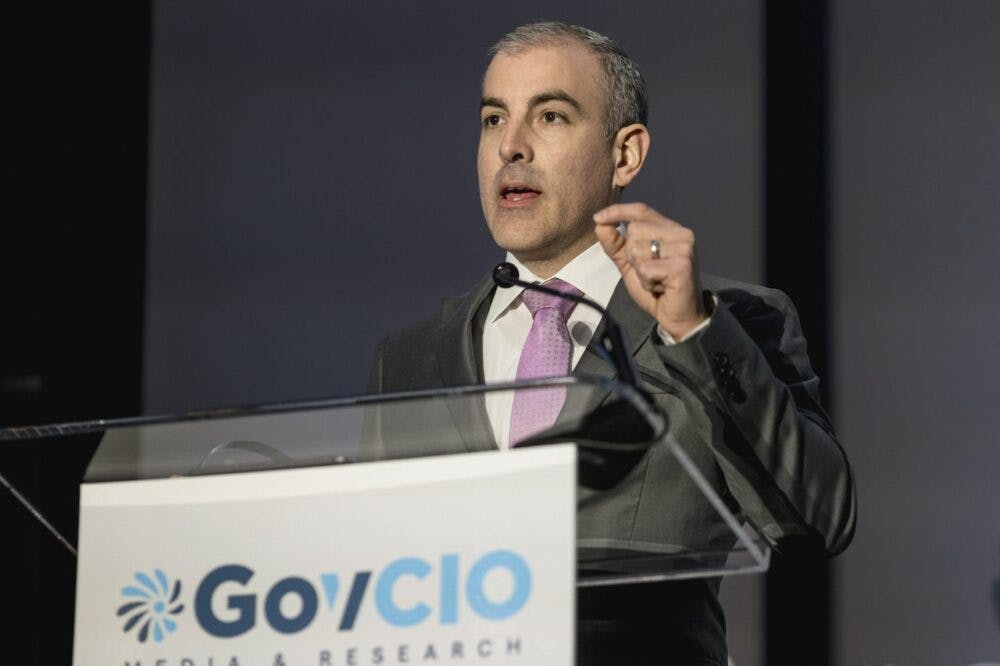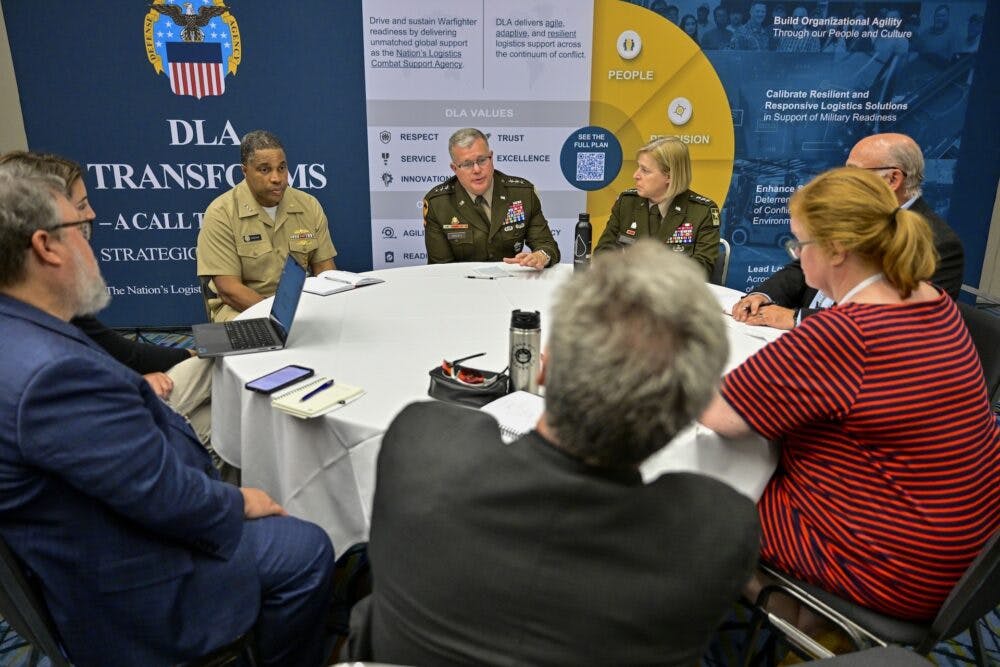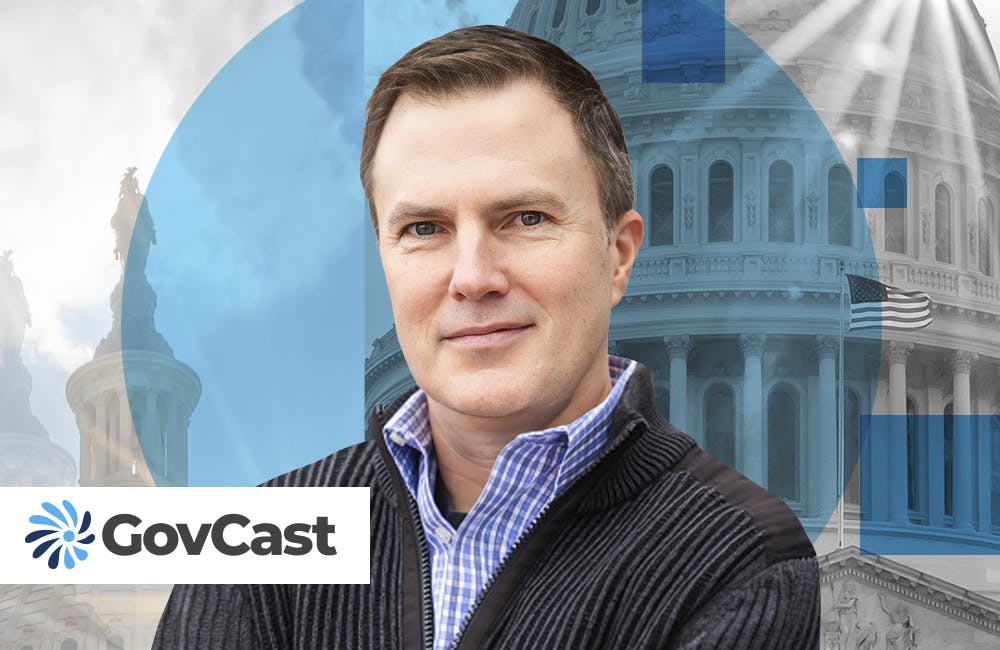Structure, Governance Key to Data Planning, Agency Leaders Say
Recent lessons learned and efforts to quickly stand up data platforms are contributing to future strategic goals around data.

Federal agencies have been in an ongoing pursuit of harnessing the power of data. Recently, this has manifested with agencies establishing chief data officers, strategies and governance structures.
Data leaders from the departments of Homeland Security and Health and Human Services provided a glimpse of their strategic work around data, highlighting that various organizational structures, governance and business value are key to their current and ongoing plans.
“What you really want to do is really take a look at what is the data strategy within a department and agency, but then how does that fit into the broader aspects of all the things that a department has to do as it relates to supporting the mission?” said former DHS CIO Karen Evans during FedScoop’s virtual event Tuesday. “You can’t do the mission functions without having the data and having integrity associated with the data for that decision-making.”
Citizenship and Immigration Services (USCIS) Data Analytics Chief Damian Kostiuk added that the CDO office within the agency really understands mission needs and return on investment because it’s nested within the business side of the agency, rather than within an IT office. Although he said there are benefits to being nested in either, the structure of his office enables him to coordinate work around data very closely with USCIS’s needs.
“With the business side, we’re really looking at how can we track all the different fields that are in our corpus? Do we know where everything is, and do we know how it can be effectively and efficiently shared throughout the organization for accessibility, and then also obviously for data quality? Then, how can we best help the organization from a business standpoint and be really data driven?” Kostiuk said.
Kostiuk added that a core piece to strategizing data around business needs is in cutting any extra layers of bureaucracy and providing clear value and savings to the agency. Kostiuk said his team is taking on projects that clearly indicate and prove value.
Going hand-in-hand with the strategy is creating data standards to help the agency leverage data and dovetail business and IT activities. From there, he said agencies can established a structured data science environment that will enable new opportunities to stand up automation and other emerging technologies that rely on data.
Over at HHS, Chief Data Scientist Kristen Honey agreed that not only are business needs, governance and structure important to realizing success with data, but also collaboration and implementation of work.
As HHS was standing up its CDO office, the COVID-19 pandemic was escalating as the center of the agency’s work. Honey highlighted how data leadership at HHS collaborated with other health agencies to establish HHS Protect, a centralized data platform to examine and use COVID-19 data to drive the pandemic response. While partnerships with other agencies and industry were central to the success of the platform, Honey said she and other data leaders are taking the best practices, standards, infrastructure and culture that HHS developed throughout the pandemic to fuel future data-driven projects and needs across the agency.
“Currently, we’re collaborating here at HHS with the Census Bureau, Department of Commerce, EPA and others, and we’re doing another full-length tech sprint beyond only COVID and health that’s also addressing climate change, environmental issues and how do you transform federal open data into digital tools that’ll get on the market quickly and have real-world impact,” Honey said.
This tech sprint is called the Open Data for Good Grand Challenge, which will allocate $100,000 in prizes to the five winning teams in COVID-19 and health needs and $310,000 in prizes to other categories.
This is a carousel with manually rotating slides. Use Next and Previous buttons to navigate or jump to a slide with the slide dots
-

Opinion: Original Intelligence Is the Missing Piece for AI Transformation
Limitations of AI agents and development drive growing needs for workforce development and "original intelligence."
3m read -

The Next AI Wave Requires Stronger Cyber Defenses, Data Management
IT officials warn of new vulnerabilities posed by AI as agencies continue to leverage the tech to boost operational efficiency.
5m read -

Federal CIOs Push for ROI-Focused Modernization to Advance Mission Goals
CIOs focus on return on investment, data governance and application modernization to drive mission outcomes as agencies adopt new tech tools.
4m read -

Agencies Push Data-Driven Acquisition Reforms to Boost Efficiency
New initiatives aim to increase visibility of agency spending, improve data quality and create avenues to deploy solutions across government.
5m read -

Data Transparency Essential to Government Reform, Rep. Sessions Says
Co-Chair of the Congressional DOGE Caucus Rep. Pete Sessions calls for data sharing and partnerships to reduce waste and improve efficiency.
5m read -

DOD Can No Longer Assume Superiority in Digital Warfare, Officials Warn
The DOD must make concerted efforts to address cyber vulnerabilities to maintain the tactical edge, military leaders said at HammerCon 2025.
4m read -

DHA CDAO Spearheads Master Data Catalog to Boost Transparency
Jesus Caban plans to boost DHA's data maturity through a new master data catalog, governance frameworks and inventory of tech tools.
5m read -

IRS Makes Direct File Code Public as Lawmakers Debate Program’s Fate
The agency sees the Direct File source code as beneficial to government digital services despite what happens with it in proposed budgets.
5m read -

A Look at Federal Zero Trust Transformation
Recent developments from CISA and DOD show how government is advancing zero trust quickly.
20m read -

New Army Acquisition Plan Cites Autonomy, Predictive Analytics
Officials outline how the Army Transformation Initiative signals a broader shift toward efficiency with tech and acquisition reform.
4m read -

DOE National Labs Launch New AI Tools for Operational Efficiency
The Energy Department's National Laboratories are using AI to increase operational efficiency and drive research efforts forward.
3m read -

Human-AI Collaboration is Key to Secure Government Systems
Former CIA security chief emphasizes training and international standards for effective AI implementation.
23m watch
















